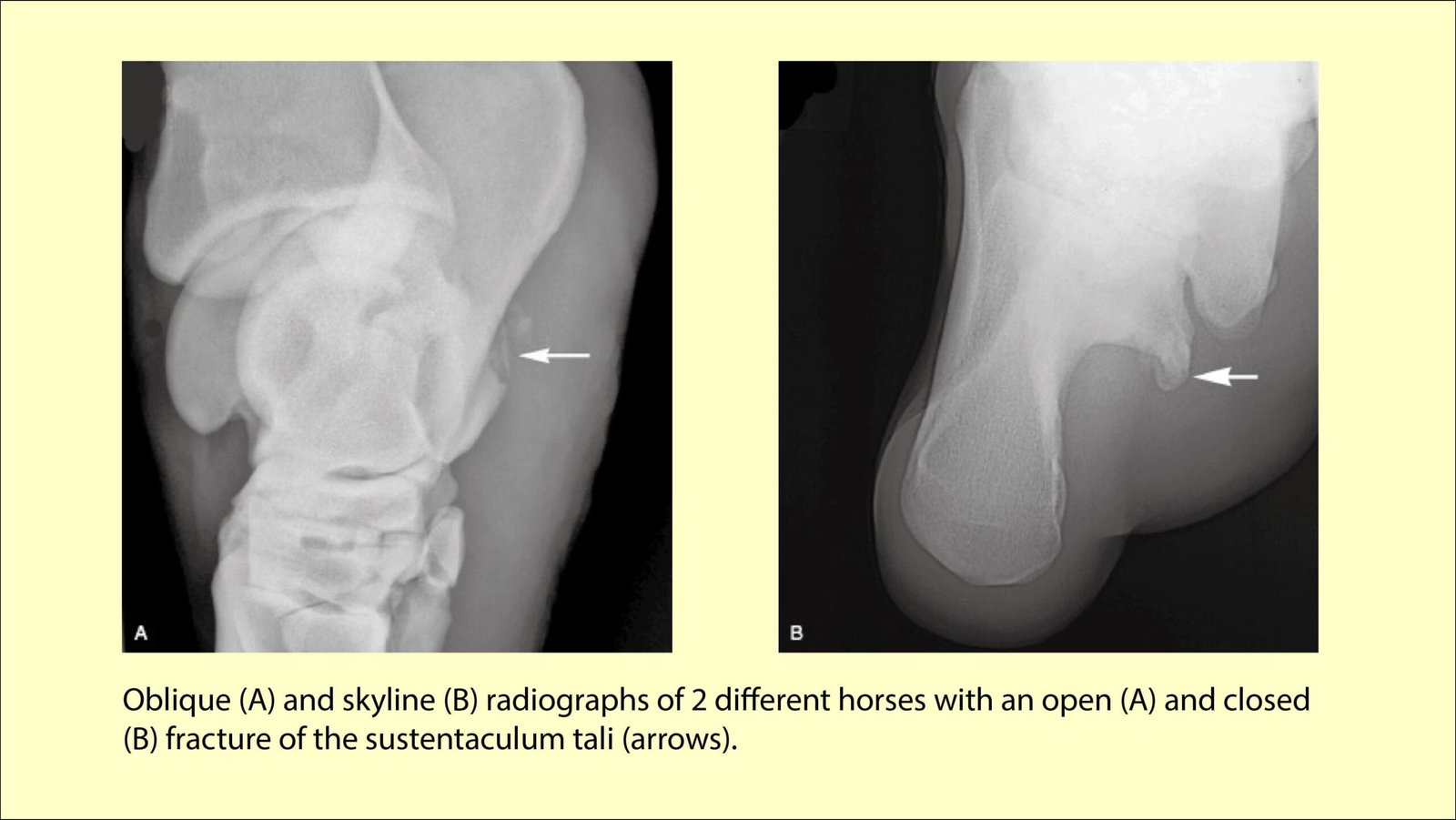TABLE OF CONTENTS
Thoroughpin in Horses
Tenosynovitis or effusion of the tarsal sheath is often referred to as Thoroughpin in the Horses. Thoroughpin is a morphological description of the swelling.
The tarsal sheath is located on the medial aspect of the tarsus and begins 5 to 8 cm proximal to medial to the malleolus and extends distally to the proximal one-third of the metatarsus. It has a variable length (21 to 32 cm) and an estimated volume of 20 to 50 mL. It encloses the DDFT of the hindlimb as it courses over the sustentaculum tali on the medial aspect of the tarsus.
Etiology
While some cases have idiopathic synovitis, potential causes for tarsal sheath tenosynovitis include damage to the DDFT, sustentaculum tali, or calcaneus, and infection from penetrating injuries or haematogenous spread.
Clinical signs
- Effusion within the tarsal sheath
- No apparent lameness
- Horses with previous trauma to the sustentaculum tali (with or without DDFT abnormalities) often present for lameness and swelling of the medial aspect of the tarsus

Diagnosis
- Based on the Clinical findings
- Radiography – Fractures, osteomyelitis, and proliferative exostosis of the sustentaculum tali are the most common radiographic abnormalities seen
- Ultrasonography
- Aspiration of synovial fluid from the sheath should be performed in horses with suspected sepsis or osteomyelitis of the sustentaculum tali
- Contrast radiography or a fistulogram may also be helpful to document synovial involvement of the tarsal sheath in horses with penetrating wounds.
Treatment
- Intrasynovial injection of anti-inflammatory drug like corticosteroids or HA
- Pressure bandaging
- Horses with fractures, exostosis, or osteomyelitis of the sustentaculum tali are usually best treated surgically. This is especially true for open fractures and osteomyelitis with secondary infection of the sheath
- Lavage and debridement
- Removal of fractured fragment and exostosis
- Parentral and intrasynovial anti-microbials
- IV regional limb perfusion
Prognosis
The prognosis of horses with tarsal sheath tenosynovitis is variable, depending on the cause. Horses with idiopathic synovitis have a very good prognosis except for the cosmetic blemish. Horses with small fractures of the sustentaculum tali can do well, provided damage to the DDFT is minimal. The overall prognosis for recovery from a septic tendon sheath is only fair. However, successful results can be accomplished if the debridement is complete and infection controlled.